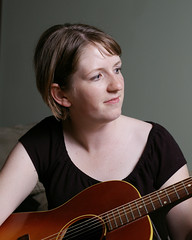One of the early things you'll learn as a photographer is natural light = good, artificial light = bad. That rule is entirely wrong, though, so you have to try to overcome it. Natural light is great sometimes, but you have to be able to recognize the times it's great, and the times it's not so hot. Being well versed in artificial lighting not only can help you recognize bad light, it can give you options to overcome it.
Strobist.com is one website every amateur should at least take a peek at. It's a blog that deals with simple artificial light using off-camera flash, and it's written in a way that even a complete dolt like myself can understand. It's not the holy bible of light, more like the annotated primer. The site has helpful hints and equipment advice, along with some sample shoots and assignments.
In that vein, I have started to assemble a "studio" setup myself. Studio lighting sounds expensive, and it certainly can be - strobes can run in the hundreds of dollars, along with radio triggers and other accessories. But that doesn't mean that a
My own kit proves this theory; I must have spent less than $80 on the whole thing, not including the camera of course. All you need is a flash that has a manual mode, a light stand, some cords or radio triggers, and an umbrella. In my case, that means a Nikon SB-24 ($40), an old tripod, some chinese flash triggers ($25) from eBay, and a sun Parasol with reflective silver lining from Wal-mart ($6). Set it up on manual power, pop off a few test shots, and you're at the beginning stage of lighting. And that's a beautiful thing.



No comments:
Post a Comment